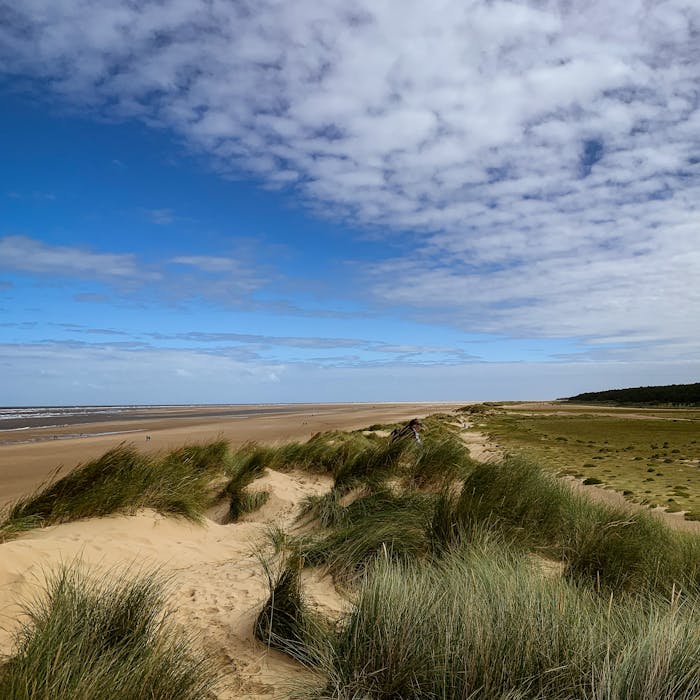
Holkham Sand Dunes - delicate delight on the Norfolk coast
Holkham National Nature Reserve on the Norfolk coast is England's largest national nature reserve. It has a wide range of habitats, but the amazing sand dunes are the most prominent feature.
The reserve is between Burnham Overy Staithe and Blakeney, and is managed by Natural England with the cooperation of the Holkham Estate. Its 3,900 hectares (9,600 acres) comprise a wide range of habitats, including grazing marsh, woodland, salt marsh, sand dunes and foreshore.
The reserve is part of the North Norfolk Coast Site of Special Scientific Interest, and is part of both an Area of Outstanding Natural Beauty (AONB) and a World Biosphere Reserve.
Holkham is important for its wintering wildfowl, especially pink-footed geese, Eurasian wigeon and brant/brent geese, and attracts many migrating birds in autumn. A number of scarce invertebrates and plants can be found in the dunes, and the reserve is one of the only two sites in the UK to have an antlion colony (fierce insects who in larval form dig pits in the sand to trap ants and other snacks).
This stretch of coast originally consisted of salt marshes protected from the sea by ridges of shingle and sand, and Holkham's Iron Age fort stood at the end of a sandy spit surrounded by the tidal wetland. The Vikings navigated the creeks to establish Holkham village, but the former harbour became inaccessible as the marshes were drained and reclaimed from the 17th century.
The national nature reserve was created in 1967 from 1,700 hectares (4,200 acres) of the Holkham Estate and 2,200 hectares (5,400 acres) of foreshore belonging to the Crown.
The reserve has over 100,000 visitors a year, including birdwatchers and horse riders, and is therefore significant for the local economy. The NNR has taken steps to control entry to the fragile dunes and other areas important for their animals or plants because of the damage to sensitive habitats that could be caused by unrestricted access. The dunes are an essential natural defence against the projected rises in sea level along this vulnerable coast.
Further reading
Links to external websites are not maintained by Bite Sized Britain. They are provided to give users access to additional information. Bite Sized Britain is not responsible for the content of these external websites.
